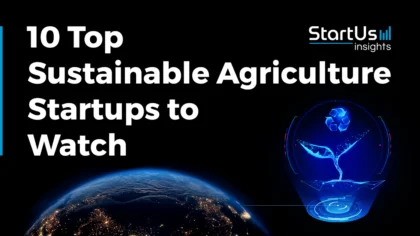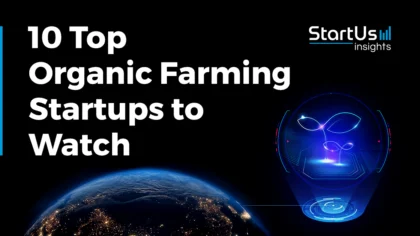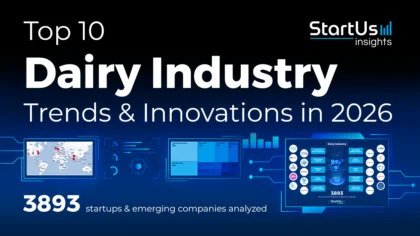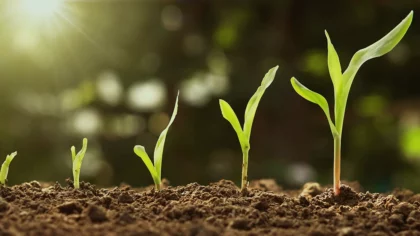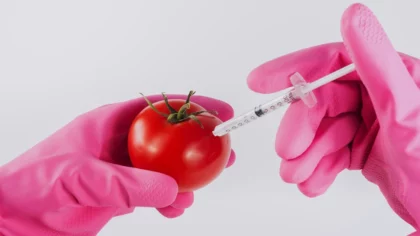Accelerate Productivity in 2025
Reignite Growth Despite the Global Slowdown
Executive Summary: What are the Top 10 Irrigation Industry Trends in 2026 & Beyond?
The irrigation industry is driven by growing water stress, climate volatility, and the need for energy-efficient, precision-based water management. The top 10 emerging trends in the irrigation industry are:
- Irrigation Monitoring – LoRaWAN-powered Internet of Things (IoT) monitoring systems with edge computing track soil conditions in real time to manage and adjust water delivery. The global smart irrigation market is projected to reach USD 2.65 billion by 2030.
- AI Integration – AI-powered irrigation platforms analyze satellite imagery, weather forecasts, and sensor inputs to reduce water usage by up to 50% while improving yields by 20-30%.
- Drones for Irrigation – Equipped with thermal and multispectral imaging, drones detect crop stress, inspect irrigation infrastructure, and apply water with centimeter-level precision. The agricultural drone market is projected to hit USD 10.26 billion by 2030.
- Solar Irrigation – Photovoltaic (PV)-powered irrigation systems reduce energy costs and extend access to off-grid regions. The global solar irrigation market is projected to reach USD 211.97 billion by 2037, at a compound annual growth rate (CAGR) of 8.9%.
- Automated Irrigation – Smart controllers and actuated valves respond to soil and weather data in real time. This reduces labor needs and increases yield consistency. The market for automated irrigation is expected to reach USD 26.04 billion by 2034.
- Weather-Based Controls – Weather-integrated irrigation systems adjust watering schedules based on live forecasts and evapotranspiration data. This reduces water use by over 15%.
- Smart Crop & Soil Sensors – Advanced sensors continuously monitor moisture, pH, salinity, and temperature in root zones to enable precision irrigation and improve crop yields.
- Drought-Resilient Solutions – Climate-adaptive systems, like pressure-compensated drip lines and soil additives, improve water retention and sustain crops during dry spells. In Cambodia, public-private initiatives are rebuilding drought-proof irrigation networks.
- Micro Irrigation Systems – Improve water-use efficiency. This is supported by government subsidies like India’s PMKSY-Per Drop More Crop (PDMC) scheme. Integrated with automation and remote controls, these systems scale across field crops, orchards, and greenhouses.
- Water Recycling and Reuse Systems – Reverse osmosis (RO) and membrane bioreactors convert wastewater into safe irrigation resources, with the reuse market expected to reach USD 29.61 billion by 2030.
Read on to explore each trend in depth – uncover key drivers, current market stats, cutting-edge innovations, and leading irrigation industry innovators shaping the future.
Frequently Asked Questions
1. How is technology improving the irrigation industry?
AI, IoT, drones, and edge computing enable real-time monitoring, automated control, and data-driven irrigation decisions. They enable farmers and gardeners to conserve water, lower costs, and increase resilience to climate variability.
2. What is the scope of emerging trends in irrigation?
Irrigation trends support efficiency, climate adaptation, and sustainability across agriculture, landscaping, urban green spaces, and industrial applications, with particular importance in water-stressed regions.
3. How big is the irrigation market?
The global smart irrigation market is projected to grow from USD 1.59 billion in 2025 t0 USD 2.65 billion by 2030, at a CAGR of 10.8%.
Methodology: How We Created the Irrigation Industry Trend Report
For our trend reports, we leverage our proprietary StartUs Insights Discovery Platform, covering 7M+ global startups, 20K technologies & trends plus 150M+ patents, news articles, and market reports.
Creating a report involves approximately 40 hours of analysis. We evaluate our own startup data and complement these insights with external research, including industry reports, news articles, and market analyses. This process enables us to identify the most impactful and innovative trends in the irrigation industry.
For each trend, we select two exemplary startups that meet the following criteria:
- Relevance: Their product, technology, or solution aligns with the trend.
- Founding Year: Established between 2020 and 2025.
- Company Size: A maximum of 200 employees.
- Location: Specific geographic considerations.
This approach ensures our reports provide reliable, actionable insights into the irrigation innovation ecosystem while highlighting startups driving technological advancements in the industry.
Innovation Map outlines the Top 10 Irrigation Industry Trends & 20 Promising Startups
For this in-depth research on the Top 10 Irrigation Industry Trends & Startups, we analyzed a sample of 1000+ global startups & scaleups. The Irrigation Industry Innovation Map created from this data-driven research helps you improve strategic decision-making by giving you a comprehensive overview of the irrigation industry trends & startups that impact your company.
Tree Map reveals the Impact of the Top 10 Irrigation Industry Trends
The irrigation industry trends shaping 2026 signal a clear move toward precision water management, sustainability, and climate resilience.
AI and real-time monitoring improve irrigation scheduling and decision-making. Drone-based imaging and smart sensors also enable targeted water application to reduce wastage and improve performance.
Solar-powered and automated irrigation lowers energy use and manual intervention, while weather-based controls and climate-resilient infrastructure strengthen irrigation systems against unpredictable conditions.
Further, advances in micro irrigation and water reuse technologies improve water use efficiency across farms and irrigation networks.
Global Startup Heat Map covers 1000+ Irrigation Industry Startups & Scaleups
The Global Startup Heat Map showcases the distribution of 1000+ exemplary startups and scaleups analyzed using the StartUs Insights Discovery Platform. It highlights high startup activity in Western Europe and India, followed by the United States. From these, 20 promising startups are featured below, selected based on factors like founding year, location, and funding.
Want to Explore Irrigation Industry Innovations & Trends?
Top 10 Emerging Irrigation Industry Trends [2026 and Beyond]
1. Irrigation Monitoring: Smart Irrigation Market to Hit USD 2.65 B by 2030
Agriculture consumes roughly 70% of global freshwater, and irrigation uses large amounts of farm-level water. Climate change increases evapotranspiration and alters rainfall distribution. This increases water demand and leads to more frequent drought conditions. Hence, farmers need adaptive systems that respond to environmental changes.
Irrigation monitoring delivers this capability by using live data to optimize water application. The solution developers combine IoT, AI, and sensors to create accurate, responsive irrigation monitoring systems.
Edge computing further adds local processing power for irrigation systems to function without internet access. Weather data like rainfall predictions and evapotranspiration is gathered from meteorological services through APIs. Irrigation management software then uses this data to automatically change watering schedules. For example, Ain Shams University in Egypt reported a 28.1% reduction in water and energy use by deploying solar-powered smart irrigation systems with local weather integration.
Irrigation systems using long-range (LoRa), Zigbee, and 4G networks ensure reliable data flow across fields for irrigation monitoring. These protocols support continuous sensor data transmission to enable real-time monitoring and timely schedule adjustments.
For example, Pinata Farms uses 30 MHz microclimate and moisture sensors, along with 4G gateways, to monitor irrigation at its farms.
Greenhouse growers and fertigation users also benefit by tracking root-zone moisture and automating nutrient delivery. They minimize runoff and optimize plant health.
Likewise, farmers apply the global positioning system (GPS) and geographic information system (GIS) tools to implement variable-rate irrigation. These tools map soil and crop conditions for farmers to apply water only where needed.
India’s INR 5000 crore National Bank for Agriculture and Rural Development (NABARD) scheme, for example, promotes micro-irrigation systems.
Credit: Markets and Markets
As more growers adopt these technologies, the global smart irrigation market is projected to grow from USD 1.59 billion in 2025 to USD 2.65 billion by 2030, at a CAGR of 10.8%.
WISFLOW enables Irrigation Control and Automation
Uruguayan startup WISFLOW provides a wireless irrigation control system that manages water pumps and valves across agricultural fields.
It uses a base radio with a 5-kilometer range to operate irrigation hardware. This setup relies on a central antenna and eliminates the need for wired infrastructure.
Credit: WISFLOW
Through WISFLOW’s connected mobile application, businesses schedule automatic watering, define irrigation zones, and set specific times and durations for each sector.
In addition, the wireless system supports real-time monitoring and sends alerts for operational events. This enables timely field interventions.
Verdi Expeditions offers a Wireless Soil Moisture Monitoring System
Canadian startup Verdi Expeditions delivers a wireless soil moisture monitoring system that improves irrigation decisions across farms.
The system connects SDI-12 compatible sensors or probes to the dashboard using LoRaWAN-enabled connectors and controllers. These devices transmit real-time soil moisture data over distances up to six miles. This allows farms to centralize and visualize field conditions on a single dashboard.
The system enables users to view moisture patterns, receive threshold-based alerts, and trigger irrigation automatically based on actual soil conditions.
Additionally, the startup uses solar-powered, maintenance-free hardware to simplify installation and reduce on-site labor.
Through the dashboard, businesses track pump and valve activity, detect leaks, and log irrigation events for compliance and performance analysis.
2. AI Integration: Reduce Water Use by 50%
Farmers integrate AI into irrigation systems to conserve water and reduce costs. These systems also improve resilience by adapting to climate variability, minimizing weather-related risks, and sustaining crop productivity under changing environmental conditions.
A 2025 meta-analysis reviewing recent advancements in AI-driven irrigation systems found that they reduce water consumption by up to 50% while increasing crop yields by 20-30%.
Moreover, unpredictable rainfall and extreme weather render traditional irrigation methods less effective. AI algorithms counter this by analyzing weather forecasts, evapotranspiration rates, and satellite imagery to make proactive irrigation decisions.
Additionally, AI systems reduce labor costs through automated scheduling, remote management, and predictive maintenance.
The use of machine learning (ML) algorithms to analyze multispectral imagery and historical climate data generates irrigation forecasts days in advance.
Edge computing supports local decision-making when farms have limited internet access. For instance, the Green Innovation Centre (GIZ), in collaboration with Tunisia’s agricultural research institute INAT, launched a pilot smart irrigation project in 2019. The system gathers soil, plant, and climate information, transmits it to the cloud, and uses an app to compute precise watering schedules.
Similarly, in Thailand, mangosteen growers use AI-controlled sensors to stabilize soil moisture and improve fruit quality.
Further, xFarm Technologies partnered with OCMIS in January 2024 to develop water-efficient irrigation systems that address growing challenges in agricultural water use.
GaiaData analyzes AI Engine for Water Management
US-based startup GaiaData builds an AI engine for water management that increases irrigation decisions in response to climate variability.
The AI engine processes real-time weather forecasts and on-field data to predict water stress, schedule irrigation, and determine yield improvement potential.
It delivers predictive insights and irrigation control through StressGuard, AquaChrono, and YieldBoost tools that forecast water stress, schedule irrigation, and estimate yield potential.
Additionally, the startup provides access via a web app and application programming interface (API) while managing data integration, cleaning, and storage to ensure input quality.
Smart Vesna supports Hyper Precision Plant Irrigation with AI
Turkish startup Smart Vesna offers an AI-supported, computer-controlled system. It automates irrigation, fertilization, air conditioning, and imaging for soilless and indoor vertical farming.
The system integrates real-time environmental data with plant-specific parameters. It delivers hyper-precise irrigation and climate control across various plant types and cultivation settings.
Moreover, the system uses AI and ML to process sensor inputs, optimize crop-specific recipes, and adjust growing conditions.
The startup combines modular hardware and flexible software to support installations in greenhouses, homes, and industrial vertical farms. It also minimizes human error and resource waste.
Further, by automating complex processes across diverse plant groups and climate scenarios, Smart Vesna improves operational consistency. It also enables sustainable, high-efficiency farming without reliance on soil or seasonal constraints.
3. Drones for Irrigation: Aerial Tech to Power USD 10.26 B Market by 2030
Irrigated agriculture accounts for 42% of total freshwater withdrawals, which makes it the largest user of freshwater in the US. Climate change intensifies this urgency by causing more frequent droughts and unpredictable rainfall. Drones address these issues by delivering aerial insights that guide real-time irrigation decisions.
Thermal cameras and multispectral sensors allow drones to detect early signs of crop stress and identify areas needing water. Farmers use these insights to prevent yield losses and fine-tune resource use. Drones also inspect irrigation infrastructure and detect clogs or leaks in pipelines and emitters that disrupt water flow.
High-resolution imagery and real-time kinematic (RTK) positioning allow drones to apply water with centimeter-level accuracy. For instance, DJI Agras T50 drones spray up to 40 kilograms of liquid and cover 50 acres per hour. These drones reduce water usage through variable rate application tailored to crop and soil requirements.
Agricultural operations struggling with labor shortages adopt drones for spraying and monitoring, which reduces labor costs significantly.
IoT sensors mounted on drones collect real-time data on soil moisture, temperature, humidity, and vegetation health. GPS and Real-Time Kinematic (RTK) navigation systems enable accurate georeferenced mapping of irrigation zones.
Additionally, drones equipped with edge computing analyze field data mid-flight. It also offers instant responses to crop conditions.
Commercial players are using drone-based irrigation services across large regions. For instance, DeHaat, through its vast network of 14 000+ DeHaat Centers spread across 11 states and catering to over 2.7 million farmers, will generate leads for drone services and offer agricultural services directly to end-users.
Similarly, Marut Drones and IFFCO partnered to cover more than 500 000 acres using a drone-as-a-service model.
In 2024, Marut Drones raised USD 6.2 million in Series A funding from Lok Capital to expand its operations.
EAVision Technologies in China also raised USD 30 million to develop autonomous drones suited for hilly terrains and variable irrigation demands.
Credit: Grand View Research
As adoption increases, the global agricultural drone market is projected to reach USD 10.26 billion by 2030, growing at a CAGR of 25.0% from 2025 to 2030.
Chatak deploys Multispectral or Thermal Imaging Drones for Irrigation Management
Indian startup Chatak delivers drone-based imaging and analysis solutions that support precision irrigation in large-scale farming.
It uses drones equipped with multispectral and thermal sensors to monitor soil moisture levels, detect crop stress, and assess irrigation needs across fields.
These drones, including the proprietary Chatak CADTECH HEXA, capture high-resolution imagery and environmental data. The system then analyzes this data to identify water-deficient zones and schedule targeted irrigation.
Moreover, Chatak’s platform enables farmers to map fields, scout for irrigation-related issues, and optimize water use through early detection of stress indicators.
By automating moisture monitoring and integrating real-time analysis, the startup further reduces input waste and improves water distribution. It also strengthens decision-making for sustainable irrigation management.
Fuselage Innovations delivers Precision Farming with UAVs
Indian startup Fuselage Innovations designs drone-based systems that support precision irrigation and crop monitoring across agricultural landscapes.
It deploys proprietary drones such as the DGCA-certified FIA QD10 and the multispectral imaging-enabled Nireeksh. These drones automate spraying and assess irrigation needs based on real-time field conditions.
The FIA QD10 enables accurate liquid application through automated flight paths. It also reduces water usage and input waste.
Moreover, Nireeksh uses sensors, including red, red edge, NIR, IR, and RGB, to detect early signs of water stress, nutrient deficiencies, and crop damage.
The drones collect and transmit environmental data to a cloud platform. They also allow farmers to analyze moisture trends and adjust irrigation schedules remotely.
Additionally, automatic flight planning and field mapping features ensure full coverage with minimal manual intervention.
4. Solar Irrigation: Global Market to Hit USD 212 B by 2037
Rapidly growing energy costs and the need for climate-resilient agriculture increase the global transition to solar irrigation. Traditional systems depend on diesel or unstable grid electricity, which increases operating costs and exposes farmers to energy price volatility.
In contrast, solar irrigation systems lower energy expenses and offer cost-effective alternatives in off-grid and remote regions. For example, Bangladesh’s solar irrigation program, supported by IDCOL, installed over 1523 solar pumps. This initiative replaced diesel units and reduced carbon emissions and fuel costs for smallholder farmers.
Moreover, increasing water stress and global food demand push farmers toward more efficient irrigation methods. As the world’s population grows and diets diversify, agricultural production must increase to meet rising needs. Solar-powered systems, especially when integrated with precision controls, conserve water while ensuring timely delivery to crops.
Photovoltaic (PV) panels generate electricity to power water pumps for drip, sprinkler, or center pivot irrigation systems. Farmers use monocrystalline panels for high efficiency and limited space, while polycrystalline or thin-film types serve larger or cost-sensitive operations.
Maximum power point tracking (MPPT) controllers further optimize voltage and current under changing sunlight conditions to maximize energy output. In low-radiation periods, lithium-ion or lead-acid batteries store solar energy for continuous irrigation.
Farmers pair these energy systems with surface or submersible pumps. According to T-L Irrigation, its Precision Mobile Drip Irrigation (PMDI) technology which combines pivot irrigation with drip hoses, delivers water with efficiency approaching 95%.
Another example is that of Kenya, wherein IWMI partnered with SunCulture to deploy solar-powered irrigation systems.
Credit: Research Nester
Internationally, projects at Egypt’s Ain Shams University reported a 28.1% reduction in water and energy use with smart solar systems. The global solar irrigation market is projected to reach USD 211.97 billion by 2037, at a CAGR of 8.9%.
Irritechng enables Portable Solar Irrigation and Installation
Nigerian startup Irritechng supplies solar-powered irrigation systems that expand water access for smallholder farmers across underserved agricultural regions.
It offers portable surface and submersible solar pumps equipped with controllers. They operate at various horsepower levels, depths, and flow rates, delivering between 700 and 25 000 liters per hour.
Moreover, these solar pumps utilize solar energy to extract and distribute water efficiently. This eliminates reliance on grid electricity or fuel-based alternatives.
The startup further provides complete installation kits for different farm sizes and supports system deployment through land assessment, infrastructure setup, and supply sourcing.
Tulima manufactures Solar Surface & Submersible Farm Pumps
Ugandan startup Tulima Solar provides solar-powered irrigation systems that enable small-scale farmers to grow crops independently of rain and rising fuel costs.
The startup offers surface and submersible solar water pumps to draw water from sources such as rivers, lakes, or boreholes and deliver it efficiently across farmlands.
Moreover, the systems include solar panel arrays, control units, mounting structures, wiring, and pipes.
The pumps also operate without electricity or fuel, with capacities ranging from 1000 to 40 000 liters per day, depending on the depth and water source.
In addition, Tulima Solar offers customized irrigation system design, full installation services, and after-sales support from regional offices.
5. Automated Irrigation: Market to Reach USD 26.04 B by 2034
The global irrigation automation market is set to reach USD 26.04 billion by 2034, expanding at a CAGR of 16.45% between 2025 and 2034. The growth stems from pressures like workforce shortages and climate unpredictability.
Credit: Precedence Research
Automated irrigation directly addresses these challenges by enabling precision in water delivery and reducing operational burdens. Conventional irrigation wastes water through overwatering and evaporation. However, automated systems reduce water use and increase crop yields.
The advanced installations automate irrigation by integrating soil moisture sensors, weather APIs, and predictive analytics to trigger watering without manual input. These installation systems autonomously control valves and pumps based on real-time data and eliminate the need for manual operation.
Actuated relays automate irrigation by controlling pumps and sprinklers in real time without manual intervention. This offers precise and consistent water delivery across farm zones. Similarly, long short-term memory (LSTM) models support automated irrigation by predicting optimal watering schedules using historical weather and soil data.
Edge computing enhances automated irrigation by enabling rapid, on-site processing of sensor data to trigger immediate irrigation actions without relying on cloud latency. For instance, Netafim’s GrowSphere platform, deployed on large Brazilian farms, uses edge-powered predictive fertigation and automated irrigation controls.
Solar-powered systems lower operational costs and make automated irrigation viable in off-grid rural regions. A notable example is SunCulture’s deployment across Africa. It is backed by a USD 27.5 million funding round to scale these solar-powered solutions.
Further, Full Nature Farms illustrates the commercial impact of automated irrigation through the Rocket 2.0 IoT platform. It offers cost savings and higher yields by integrating sensor networks, AI algorithms, and remote access capabilities.
SmartLand automates the Irrigation and Fertigation System
Lebanese startup SmartLand develops an automated irrigation and fertigation system. It integrates sensor-driven hardware, wireless connectivity, and mobile access to optimize water and nutrient delivery in agriculture.
The system integrates a controller that interprets real-time data from sensors measuring soil moisture, temperature, pH, and nutrient levels to trigger precise irrigation events.
Credit: SmartLand
Moreover, the system connects to a fertigation machine that delivers exact fertilizer quantities to specific zones. It also links to a mobile application that allows farmers to monitor and control irrigation, valves, and pumps remotely.
Additionally, the automated system communicates through LoRa, Wi-Fi, and 4G to ensure continuous data flow and remote operation across farms.
By automating irrigation based on environmental and crop-specific inputs, SmartLand minimizes resource waste and reduces labor dependency. It further improves yield outcomes across farming regions.
SoilDrops offers an Automated Scheduling System
US-based startup SoilDrops develops an automated irrigation system built around its products, including the smart sensor irrigation controller, wireless moisture sensors, and signal boosters.
The automated irrigation system uses real-time weather data and soil moisture levels to adjust irrigation schedules across up to eight zones. This feature offers targeted watering based on plant-specific needs.
It also integrates a mobile app for full remote control and enables businesses to monitor water usage, receive leak alerts, and manage irrigation even when away.
The controller further adapts to changing conditions using AI-driven scheduling, while the plant care database personalizes watering routines by species.
Through this modular setup, SoilDrops reduces overwatering, prevents leaks, and supports efficient irrigation management for water-conscious homeowners.
6. Weather-based Controls: 100 M+ Liters Saved on Every 5000 Acres
Weather-based irrigation controls align water application with real-time environmental data. They adjust irrigation schedules based on current and forecasted weather conditions. This enables farms to reduce water consumption.
In addition to operational savings, farmers adopting weather-based controls consistently report substantial water conservation and major yield improvements.
According to Vinetur, vineyards in the Mediterranean region implemented precision irrigation systems that adapt irrigation rates based on soil moisture, plant water stress, and weather inputs. These systems delivered around a 15% reduction in water use while better matching the water needs of individual vines.
In North America, Verdi deployed its irrigation automation systems across over 5000 acres of farmland in 2024. As a result, its customers saved over 100 million liters of water and more than USD 1 million in labor costs while achieving yield improvements.
Further, Rivulis formed an exclusive partnership with Cocamar to deliver weather-integrated drip irrigation solutions to Brazilian farmers.
Sensor networks capture real-time conditions through soil moisture sensors, flow meters, weather stations, and plant health sensors. These inputs feed into IoT platforms that rely on Wi-Fi, LoRaWAN, or cellular connectivity to coordinate system components.
AKOA SYSTEM offers AI-powered Real-Time Irrigation Control
French startup AKOA SYSTEM offers a weather-based smart irrigation controller. It optimizes watering schedules using its hardware device, AKOA One, and the AKOA mobile application.
The applications integrate real-time local weather forecasts, garden layout configurations, and plant-specific water requirements to calculate and update irrigation programs.
The AKOA One controller connects to all standard 24-volt sprinkler systems and communicates with the companion app for remote access and zone management. It also features multiple watering modes.
Businesses receive real-time alerts on weather changes and watering bans. This enables timely adjustments without manual intervention.
By automating water delivery based on environmental and botanical data, AKOA SYSTEM reduces water consumption and lowers utility costs. It also supports resource-conscious irrigation for gardens and landscaped areas.
Treetoscope enables Plant-based, Weather-adaptive Irrigation
Israeli startup Treetoscope builds a plant-based irrigation management platform that leverages real-time crop sensing to align water use with actual plant demand.
The platform embeds specialized sensors directly onto plants to monitor sap flow. It collects accurate water uptake data and merges it with live weather updates, soil information, and satellite imagery through an AI-powered system.
Moreover, the platform refreshes every minute and generates actionable outputs, including stress alerts, optimal irrigation timing, and zone-specific recommendations.
Additionally, the platform functions as a plug-and-play solution with low setup requirements, remote accessibility, automated notifications, and broad field applicability.
Through the integration of direct sensing and weather-responsive controls, the startup supports informed irrigation strategies that conserve water, reduce input variability, and maintain plant health.
7. Smart Crop & Soil Sensors: Smart Irrigation Market to Exceed USD 2 B by 2030
The global smart irrigation market is valued at USD 1.59 billion in 2025 and is projected to reach USD 2.65 billion by 2030, at a CAGR of 10.8%.
IoT-enabled sensors continuously collect data on soil moisture, temperature, pH, and nutrient content. These sensors then transmit data to cloud platforms for actionable analysis. For instance, in Ecuador, LoRaWAN-based soil sensors used in strawberry farming demonstrated 94% functionality and over 86.87% usability.
Advanced platforms like Microsoft’s FarmBeats combine IoT, drone imagery, ML, and edge computing to reduce hardware costs.
Simultaneously, edge computing enables rapid and localized data processing. This allows sensor systems to function even in remote areas with limited internet access.
Solar-powered sensor modules and battery storage solutions also extend sensor reach. They enable energy-efficient operation in off-grid environments, which makes smart sensing systems viable for rural and resource-constrained farms.
One of the most effective applications of smart crop and soil sensors is precision irrigation management. These systems allow farmers to tailor water delivery to microzones within fields based on real-time moisture readings and crop-specific requirements.
Equally important, smart sensors facilitate climate-responsive irrigation strategies by merging soil data with real-time and forecasted weather inputs. This integration allows automated scheduling and prevents irrigation during rain events.
Further, the ongoing investment and partnerships increase the integration of smart crop and soil sensors into irrigation systems. In 2024, xFarm Technologies collaborated with OCMIS to test smart irrigation platforms with sensors.
Agrodit monitors Soil via Sensor Software
Swedish startup Agrodit offers a smart soil monitoring solution that improves irrigation precision using wireless multi-depth sensors and an intuitive software platform.
Its sensor system embeds fully underground devices that measure soil moisture, temperature, and salinity at two to three depths. This sensor system transmits real-time data to a centralized dashboard accessible via phone or computer.
Moreover, the soil monitoring system visualizes this data in the form of temporal trends and field-specific maps. This enables crop growers to track soil conditions and adjust irrigation accordingly.
Agrodit’s sensors install within minutes, require no ongoing maintenance, and support integration with automated irrigation systems for hands-free water management.
The system also supports municipal tree care and golf course greenkeeping through its specialized applications. Perfect Trees and Perfect Greens provide targeted insights for urban forestry and turf management.
Further, by combining high-resolution sensing technology with remote access and automated data analysis, Agrodit improves water use efficiency and reduces input waste. It also supports sustainable crop production across diverse agricultural and landscaping environments.
Agritrix manages Smart Irrigation with AI
Australian startup Agritrix integrates smart crop and soil sensors with AI-powered analytics to optimize irrigation and resource use in agriculture.
It deploys industrial-grade field sensors to capture real-time data on soil moisture, temperature, nutrient levels, pH, and atmospheric conditions. These sensors transmit the information via LoRaWAN or satellite connections to their cloud platform, CARBON.
The cloud platform combines sensor readings with weather forecasts and satellite imagery to generate irrigation schedules that respond to actual field conditions.
Credit: Agritrix
Farmers access insights through an interactive dashboard that offers parametric alarms, trend visualizations, and remote control features.
Additionally, CARBON enables predictive maintenance and anomaly detection to reduce disruptions and improve operational efficiency.
8. Drought-Resilient Irrigation: USD 400 M Invested in the US Alone
The major impacts of climate change and increasing water scarcity are driving the adoption of drought-resilient irrigation solutions. Rising temperatures, prolonged dry spells, and unpredictable rainfall patterns continue to challenge food production systems globally.
As traditional flood irrigation methods fail to meet these challenges, farmers are shifting toward targeted systems that minimize water waste and protect yields under dry conditions.
The importance of drought-resilient irrigation lies in physical systems that maximize water delivery efficiency. For example, drip irrigation supplies water directly to the root zone with minimal evaporation losses.
Additionally, micro-sprinklers distribute precise amounts of water over targeted areas for uniform coverage under dry conditions, while pressure-compensating emitters stabilize water flow regardless of terrain or pressure fluctuations.
Moreover, subsurface drip lines and regulated deficit irrigation techniques conserve water while sustaining crop yields.
Building on these systems, digital technologies like IoT-enabled sensors and AI-based scheduling tools enhance precision.
For instance, AI and ML enable predictive irrigation scheduling based on weather forecasts, evapotranspiration models, and historical soil moisture data.
A case study by the NSW Department of Primary Industries (DPI) showcases how orchard growers in New South Wales are adopting digital climate-smart irrigation tools. They include soil moisture sensors and automated scheduling systems tied to local weather data.
The Biden-Harris Administration’s USD 400 million investment also enabled infrastructure upgrades across at least 18 irrigation districts in the US. It was provided to address drought and conserve water through the production of water-saving commodities.
In California, the Fresno Irrigation District received USD 5 million to develop the Hornor and Laub Recharge Basins. The project includes monitoring wells, inlet and outlet structures, and flow measurement equipment to improve groundwater recharge and drought resilience.
Drought-resilient irrigation also plays a vital role in developing arid regions. In Cambodia, for example, the CAISAR project, funded by AIIB, IFAD, and the GCF, is restoring irrigation infrastructure across four provinces.
AgroBiogel creates Lignin-based Hydrogel
Austrian startup AgroBiogel offers Retentis, which is a wood-based soil additive that increases drought resilience by increasing water retention and soil fertility.
Retentis absorbs water from rainfall or irrigation and gradually releases it to plant roots during dry periods. This maintains hydration in extended drought conditions.
When mixed into the soil, Retentis forms a long-lasting gel that stores up to 15 liters of water per kilogram and supports consistent moisture levels in the root zone.
It also acts as a humus precursor that improves soil structure, promotes fine root growth, and converts low-fertility soils into productive land.
Nave Analytics offers De-risking Irrigation with Sensor-free Soil Data
US-based startup Nave Analytics creates drought-resilient irrigation management solutions through cloud-based tools. These tools deliver real-time soil moisture insights without relying on in-field sensors.
Its product, NaveGrow, a sensor-free irrigation management tool, analyzes root zone moisture using satellite data fusion, weather forecasting, and proprietary soil modeling. It detects leaching and drought risks, forecasts moisture trends, and informs irrigation schedules.
Moreover, the sensor-free tool generates field-specific moisture data across varying soil depths. This enables farmers to monitor entire fields efficiently and respond to changing water needs with precision.
Additionally, Nave Analytics supports long-term planning by providing historical moisture profiles and integrating with agronomic platforms through APIs. Its sensor-free approach further eliminates hardware costs and maintenance burdens.
9. Micro Irrigation Systems: India Offers 55% Subsidy for Adoption
Micro irrigation systems precisely deliver water to plant roots for sustainable water use, especially in drought-prone regions where traditional irrigation falls short. Unlike flood irrigation, which loses water to evaporation and runoff, drip irrigation and micro-sprinklers achieve increased water delivery efficiency.
Governments actively support this transition. For instance, India’s PMKSY-Per Drop More Crop (PDMC) scheme offers a 55% central subsidy for micro irrigation installation to small and marginal farmers.
The major developments within micro irrigation include variable rate irrigation (VRI), which adjusts water flow to match soil variability. Also, subsurface drip irrigation (SDI) delivers water below the surface to minimize evaporation losses.
Orchard and vineyard operators rely on sensor-driven drip systems that maintain consistent soil moisture during critical growth stages.
Moreover, low-energy precision application (LEPA) systems apply water close to the ground through drop nozzles. This minimizes evaporation and wind drift. Micro-sprinklers distribute fine droplets over targeted root zones and ensure uniform moisture for row crops and orchards.
Similarly, orchard and vineyard operators rely on sensor-driven drip systems to ensure consistent moisture during critical growth stages. These systems protect fruit quality under irregular rainfall.
Private and institutional investments reflect growing demand for these systems. For example, a USDA-funded initiative supports micro irrigation research to improve small-scale efficiency for urban farming and address food insecurity in Nebraska, US.
Raingod provides Drip Irrigation Systems
Chinese startup Raingod manufactures micro irrigation system machinery. It supports efficient water use in agriculture through advanced plastic processing technologies.
The machinery designs and produces equipment for inner-inserted and single-wing labyrinth drip irrigation tape, cylindrical drip irrigation pipes, and micro-spray tape. This enables the mass production of precision irrigation components.
Moreover, the micro irrigation system machineries create water-saving irrigation products suitable for field crops, orchards, greenhouses, landscaping, and sloped terrains.
The startup further enhances access to localized, efficient water distribution systems by delivering machinery for drip irrigation production.
It also reduces water consumption and improves crop performance across varied farming environments.
IrriTech delivers Portable Solar-powered Drip Irrigation Kits
Nigerian startup IrriTech provides micro irrigation systems powered by solar energy to improve water access for smallholder farmers.
It supplies portable submersible and surface solar pumps with flow capacities ranging from 700 to 25 000 liters per hour and matches these to different farm sizes and water sources.
Credit: IrriTech
The startup also assesses farmland, installs infrastructure, and develops farm management plans as part of its setup services. These solar-powered solutions replace fuel-based pumps, reduce labor requirements, and maintain irrigation during dry periods.
IrriTech increases farm productivity and income by enabling farmers to irrigate efficiently while minimizing costs and environmental impact.
10. Water Recycling and Reuse Systems: Global Reuse Market to Hit USD 29.61 B by 2030
Regulatory frameworks such as the European Union’s EUR 255 billion water resilience strategy support this shift by mandating agricultural water reuse.
At the same time, economic drivers like the lower cost of recycled water and its retained nutrients make these systems financially attractive for irrigation. For instance, Israel’s Emek Hefer Water Reclamation facility reuses wastewater for crop irrigation through an integrated regional distribution system.
Membrane filtration technologies, including reverse osmosis (RO), ultrafiltration (UF), and microfiltration (MF), remove contaminants and produce high-quality water for irrigating food crops.
Companies also use membrane bioreactors (MBRs) to integrate biological treatment with filtration for eliminating organic waste and recovering nutrients and energy.
Nanotechnology further strengthens water recycling by using graphene-based membranes that filter viruses, heavy metals, and micropollutants with high efficiency. It also consumes less energy than traditional systems.
Additionally, AI-powered controllers process data from IoT sensors to automatically adjust treatment parameters in water recycling plants. By aligning purification with crop-specific requirements, these systems ensure safe and efficient reuse in agriculture.
For instance, California’s Escondido MFRO facility processes 2 million gallons of recycled municipal wastewater per day using RO technology to irrigate avocado orchards.
Credit: Markets and Markets
Further, the global water recycling and reuse market is valued at USD 17.89 billion in 2025 and is expected to grow to USD 29.61 billion in 2030 at a CAGR of 10.6%.
Jalconserve Technologies enables On-site Greywater Recycling
Indian startup Jalconserve Technologies creates decentralized greywater recycling systems. These systems enable residential and commercial buildings to reuse wastewater for non-potable applications such as irrigation.
The on-site recycling systems capture greywater from sources like showers, hand basins, and laundry. These systems then process it through a multi-stage treatment system involving coagulation, filtration, chlorination, and aeration.
Moreover, the system removes suspended solids, bacteria, and viruses using ultrafiltration membranes and disinfects the treated water for safe reuse.
The solution operates with less electricity than conventional sewage treatment plants and integrates into both new and existing infrastructures.
Further, the startup reduces freshwater demand, minimizes sewage generation, and lowers the environmental impact of water use. It does so by redirecting greywater for irrigation and other utility functions. It also supports more sustainable water management in water-stressed regions.
Water Champions facilitates Greywater Water Capture and Reuse Systems
US-based startup Water Champions integrates greywater and rainwater recycling systems. It reduces potable water use for irrigation and other non-potable applications across residential and commercial properties.
Its proprietary Hydraloop product line includes the Hydraloop H300, H600, and Cascade. These systems treat greywater from showers, sinks, and laundry using filtration, disinfection, and aeration to produce clean water for reuse in landscapes, toilets, and laundry.
These modular systems operate on-site, support real-time IoT monitoring, and offer configurations for single-family homes, multi-unit residences, and commercial buildings.
The startup also offers raw greywater systems, which redirect filtered greywater directly to mulch basins or subsurface irrigation.
In addition, its rainwater harvesting systems collect rooftop or stormwater runoff, filter it, and deliver it to irrigation networks or storage tanks for reuse.
Water Champions further advances decentralized water reuse, conserves freshwater resources, and promotes sustainable irrigation across built environments.
Discover all Irrigation Industry Trends, Technologies & Startups
The future trends in irrigation, such as advancements in decentralized water systems and bioengineered materials, will enable smarter water retention and delivery. Nanotech-enabled filtration, blockchain-based water rights management, and satellite-guided hydrological modeling will offer increased precision and scalability.
The Irrigation Industry Trends & Startups outlined in this report only scratch the surface of trends that we identified during our data-driven innovation & startup scouting process. Identifying new opportunities & emerging technologies to implement into your business goes a long way in gaining a competitive advantage.
![Discover the Top 10 Irrigation Industry Trends & Innovations [2026]](https://www.startus-insights.com/wp-content/uploads/2025/08/Irrigation-Industry-Trends-SharedImg-StartUs-Insights-noresize-420x236.webp)

